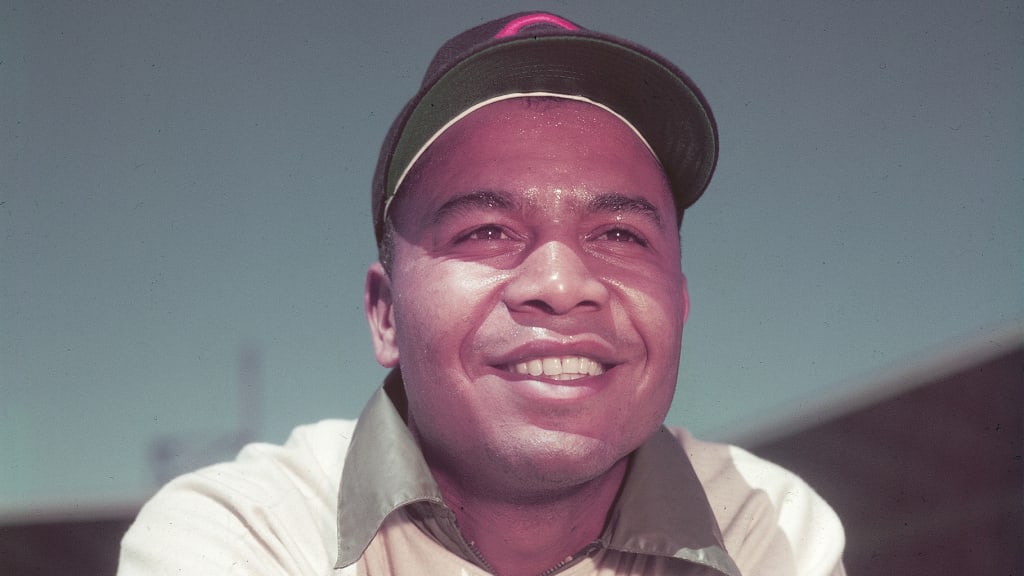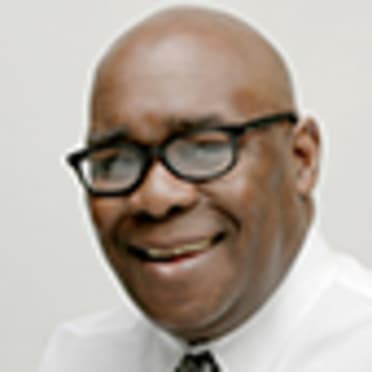
It’s well known that Jackie Robinson was the first African American to break the color barrier in Major League Baseball. Robinson had a Major League career for the ages -- starting, of course, on April 15, 1947, when he made his debut for the Brooklyn Dodgers.
There were 16 teams in the Majors at that time, and below is a look at the distinguished list of players to integrate the other 15 teams of the pre-expansion era.
Larry Doby, CF, Indians (July 5, 1947)
He broke the color barrier in the American League on July 5, 1947, 11 weeks after Robinson played his first game with the Dodgers. Doby, who was a seven-time All-Star, twice led the league in home runs in 1952 and ’54; he also won the RBI title in ’54, with 126 RBIs. Doby’s biggest highlight was helping the Indians win the World Series over the Boston Braves in 1948, going 7-for-22 (.318) with a home run and two RBIs. He was inducted into the Hall of Fame in 1998 via the Veteran’s Committee.
Hank Thompson, UTIL, Browns (July 17, 1947); Thompson and Monte Irvin, OF, Giants (July 8, 1949)
Thompson is the only player in Negro Leagues history to integrate two Major League teams. He was also the first Black player to play in both the AL and the National League. Thompson joined the St. Louis Browns on July 17, 1947, three months after Robinson broke the color barrier with the Dodgers. Thompson, a left-handed hitter with power and the ability to play all over the diamond, made history two years later by playing his first game for the New York Giants on July 8, 1949, the same day Irvin made his MLB debut for the Giants, too. A Negro Leagues legend, Irvin played eight years in the Majors, hitting .293 with 99 homers, and was inducted into the National Baseball Hall of Fame in 1973.
Sam Jethroe, CF, Braves (April 18, 1950)
After spending eight years in the Negro Leagues -- mainly with the Cleveland Buckeyes -- Jethroe was given a chance to play for the Braves in 1950, and he became the oldest player to win Rookie of the Year honors at age 34. He led the NL with 35 stolen bases in 1950 and ‘51.
Minnie Minoso, OF, White Sox (May 1, 1951)
Minoso played 28 years in professional baseball, including one big league game in 1980 at the age of 54. But longevity is just part of his legacy. Minoso was an exciting player to watch when he was with the White Sox. He led the league in triples and stolen bases three times each.
Bob Trice, Athletics (Sept. 13, 1953)
His Major League career lasted three years, but the right-hander had his moments. Trice’s best outing occurred on April 24, 1954, when he shut out the Yankees, 1-0. Two of the three strikeouts he had in the game were of Mickey Mantle. Trice also wasn’t easy out, going 15-for-52 (.288) with a home run and six RBIs.
Ernie Banks, SS/1B, Cubs (Sept. 17, 1953)
Mr. Cub’s memorable “Let’s play two” mantra exemplified his love for the game. He also had the skills to show how much he loved this game. Even though the Cubs were a second division club during his peak years, Banks won two National League MVP Awards in 1958 and ’59. Banks ended up playing his entire 19-year career with the Cubs without going to the postseason.
Tom Alston, 1B, Cardinals (April 13, 1954)
According to SABR’s Warren Corbett, former manager Lefty O’Doul thought Alston was capable of hitting 50 home runs in a season after watching him play in the Minor Leagues when both were with the San Diego Padres of the Pacific Coast League. But when he reached the Major Leagues in 1954, Alston was a different hitter. Alston had a .244 career batting in the big leagues with four home runs in 91 games scattered over four seasons.
Curt Roberts, 2B, Pirates (April 13, 1954)
During his first full year in the big leagues in 1954, Roberts saw his share of playing time at second base, but he didn’t hit well enough to have an everyday job after that. In three seasons, Young had a .223 batting average with just one home run, but he walked (55) more times than he struck out (49).
Chuck Harmon, UTIL, and Nino Escalera, UTIL, Reds (April 17, 1954)
They both made their Major League debuts as pinch-hitters, going 0-for-1 in a 5-1 loss to the Braves on April 17, 1954. Neither one had distinguished careers in the Majors. Harmon later became a basketball guru, while Escalera hit .159 in his only year in the big leagues.
Carlos Paula, OF, Senators (Sept. 6, 1954)
Paula, a native of Havana, Cuba, debuted in 1954. In first full season in 1955, Paula’s career got off to a promising start, finishing second on the team with a .299 batting average. But after hitting .183 the following season, Paula never played another big league game.
Elston Howard, C, Yankees (April 14,1955)
Howard had a baseball career Yankees fans will never forget. Not only was he in the postseason 10 times, Howard helped the Yankees win four World Series titles. And in 1963, Howard became the first African American to win the AL MVP Award. Howard’s leadership skills behind the plate, where he guided his pitchers on a nightly basis, didn’t go unnoticed. Hall of Famer Whitey Ford had his best season in 1961 with Howard behind the dish, and he claimed the AL Cy Young by winning a career-high 25 games that year.
John Kennedy, SS, Phillies (April 22, 1957)
Kennedy made his debut as a pinch-runner. He appeared in just five games and received only two at-bats without getting a hit in his only Major League season.
Ozzie Virgil, 3B, Tigers (June 6, 1958)
He never played in the Negro Leagues, but Virgil turned out to be a quality utility player. He hit .231 over nine Major League seasons, and his biggest impact may have been as Dick Williams’ third-base coach when both were with the Expos, Padres and Mariners.
Pumpsie Green, 2B/SS, Red Sox (July 21, 1959)
Green played alongside Ted Williams in 1959, 12 years after Robinson broke the color line. Unfortunately, Green didn’t get much playing time. His best season with Boston was in 1961, when he hit a career-high .260 with a .376 on-base percentage.
